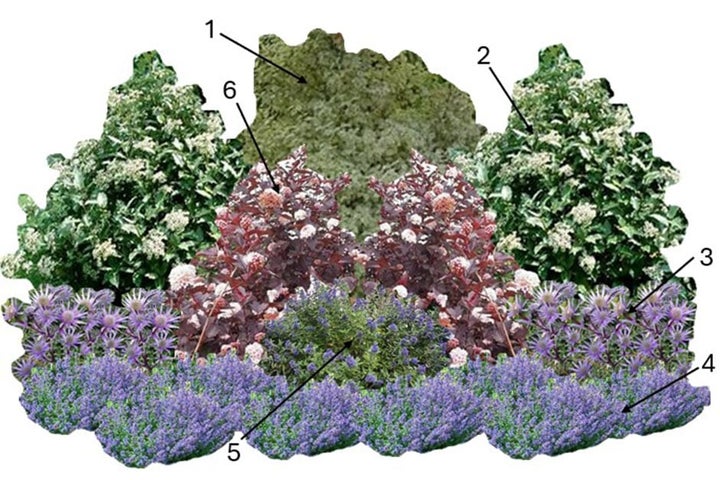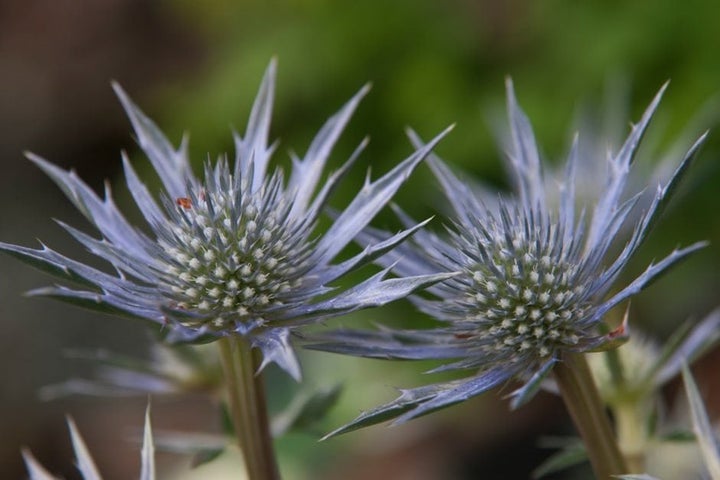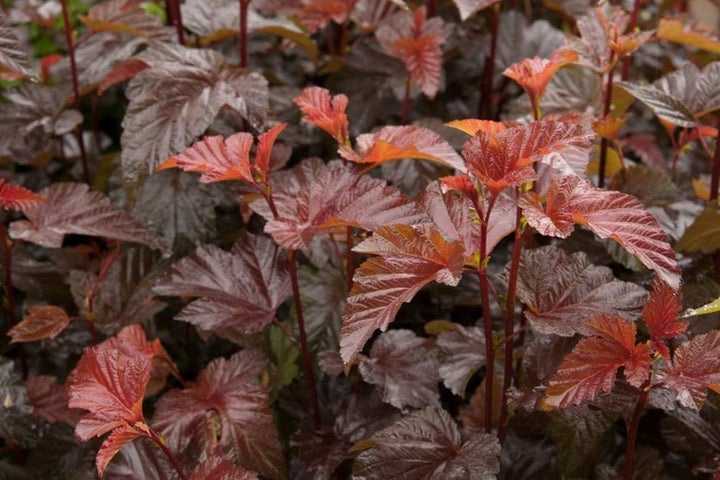
Quick facts
Sandy soil drains very quickly, so plants can be vulnerable in drought conditions
Sandy soil is quick to warm in spring, though cools quicker in autumn too
Sandy soil benefits from adding plenty of organic matter like homemade garden compost or well-rotted manure
The planting plan
James Lawrence, RHS Principal Horticultural Advisor, has designed this simple, attractive, and most importantly, sustainable border design for you to try at home with plants that are easy to grow, widely available and look good together.
This planting design, provides a range of plants that, once established, will thrive together in sandy soil and provide a variety of interest throughout the year. A simple planting plan helps create depth, interest and good coverage in a border.

Choosing plants for sandy soils
The Pittosporum and Olearia provide year-round evergreen structure, along with the winter stems of the Physocarpus. The spreading Nepeta provides some ground cover, so will help reduce soil erosion, suppress weed growth and reduce water loss from the soil surface. Most of these plants will also attract vital pollinators to the garden.
Until the plants have filled out, an organic mulch, preferably homemade compost, can help to lock in soil moisture and suppress weeds. This will also help to bind your grainy soil structure. Mulches should be spread when the soil is already moist to help trap some of that moisture before it dries out in summer.






1 - Pittosporum ‘Garnettii’ provides year-round evergreen interest through its green and white leaves, which get a pink tinge in winter.
2 -Olearia macrodontacombines its evergreen foliage with fragrant white daisy-like flowers borne in large clusters in summer.
3 - Eryngium bourgatii ‘Picos Blue’ have steely blue flowers in summer and the dried flower heads provide great autumn and winter interest if left on the plants.
4 - Nepeta racemosa ‘Walker’s Low’ provides a low groundcover of silvery-green scented leaves. Deep mauve-blue spikes of flowers display all summer if regularly dead-headed.
5 - Caryopteris x clandonensis ‘Kew Blue’ forms a fairly compact dome of fragrant foliage at the front of the scheme and produces blue flowers from late summer into autumn.
6 - Physocarpus opulifolius ‘Lady in Red’ has purple foliage which stands out against the lighter Pittosporum and is enhanced with light pink flowers in summer.
About sandy soil
Sandy soil can often struggle to hold onto moisture, as water will drain quickly due to the small soil particle sizes. By choosing plants that are naturally well suited to sandy soil, you can keep your border looking good and growing well, because plants that are planted in the right place tend to be stronger and more naturally resistant to pests and disease.
Once the plants are established, this will also reduce the need for extra inputs that less well-adapted plants would need, such as excessive water and fertiliser.
The challenge of sandy soils
Sandy soil drains quickly, so a soil with high sand content can be dry, especially during the summer months. Regular addition of garden will help with this.
Plants that enjoy good drainage are well suited to sandy soils, including many and other plants with underground that dislike winter wet. If your plants have adapted to naturally thrive in those conditions, they will grow much better.
Why choose a sustainable planting combination?
Using the ethos of ‘right plant, right place’ to create a sustainable planting combination is great for the environment. It helps to avoid waste and the use of products and practices needed to try and help ailing plants, such as applying fertiliser. It also creates robust, long-lived planting that benefits soil health and garden . For more information about sustainable gardening, please see the RHS Sustainability Strategy.



